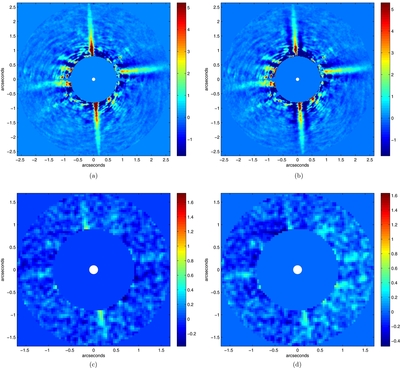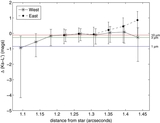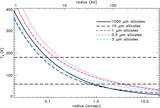Image Details

Caption: Figure 11.
Expected and observed artificial disks at the Ks band and L′. Model disks are always vertical. (a) Ks-band image of the artificial disk, showing what the disk should look like if unaltered by the LOCI algorithm reduction. (b) Ks-band image of the recovered model disk. (c) Same as (a) except at L′. (d) Same as (b), except at L′. In all cases, the model disks are recovered, though some self-subtraction is evident.
Copyright and Terms & Conditions
© 2012. The American Astronomical Society. All rights reserved.












